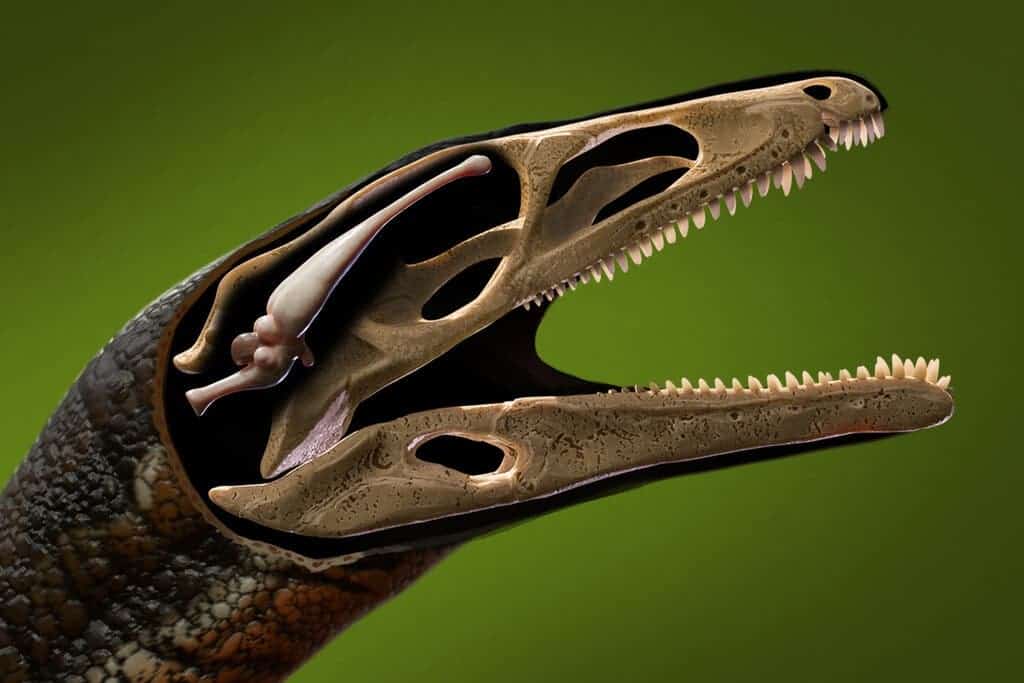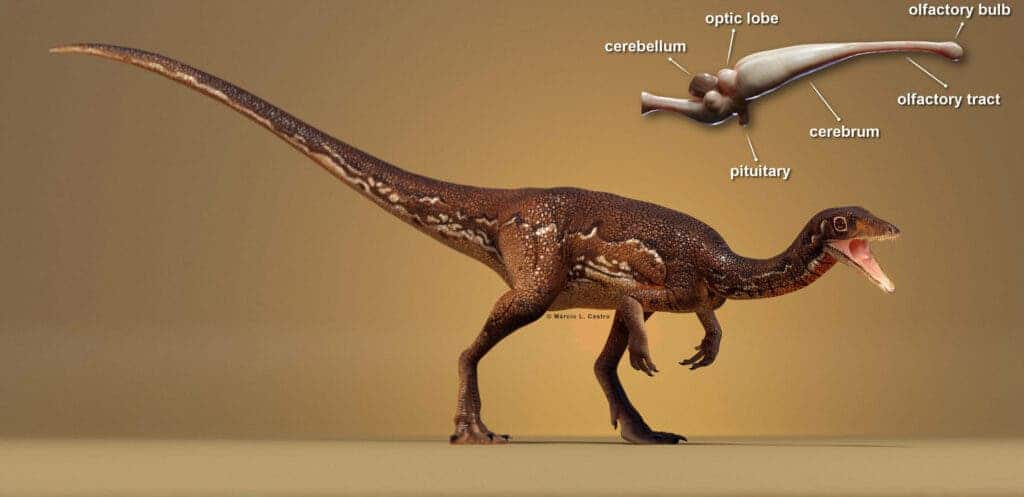
Evolution can oftentimes be unpredictable. Around 230 million years ago, a dog-sized meat-eating dinosaur by the name of Buriolestes schultzi roamed Brazil’s forests. A hundred million years later, this small dinosaur’s cousins, such as Diplodocus and Brachiosaurus, grew to sizes spanning tens of meters in length and could weigh over 100 tons.
In many lineages, relative brain size tends to increase with time — but not in this case. According to paleontologists who performed one of the most accurate brain reconstructions of a dinosaur to date, Buriolestes schultzi‘s brain weighed approximately 1.5 grams or as much as a pea. Its humongous four-legged cousins’ brains, however, were no larger than a tennis ball, much smaller than you’d expect for their size.
The 3D reconstruction was based on three skulls unearthed by Dr. Rodrigo Temp Müller, a Brazilian paleontologist from the Universidade Federal de Santa Maria. Along with colleagues from the Universidade de São Paulo, the researchers employed computed tomography (CT) to draw inferences about the ancient dinosaur’s brain from the cavity left behind.

The small Jurassic carnivore was one of the earliest dinosaurs, and this shows in its primitively-shaped brain, which resembles the morphology of the crocodile brain.
However, Buriolestes had well-developed brain structures in the cerebellum, indicating superior abilities to track moving prey. It likely hunted using its eyes more than its nostrils, seeing how the olfactory bulb was relatively small, suggesting that smell wasn’t all that important. Conversely, olfactory bulbs grew to become very large in later sauropods and other closely related giant dinosaurs.
A strong sense of smell is associated with complex social behavior in many species. Alternatively, olfactory capabilities play an important role in foraging, and helping herbivores to distinguish between digestible and indigestible plants.
In time, Buriolestes transitioned to a plant-eating diet, which explains why its brain-to-body size ratio actually decreased. Carnivorous animals generally need more cognitive power in order to detect prey, as well as other predators. For slow-moving sauropods, brainpower wasn’t at such a premium.
Indeed, when the researchers calculated Buriolestes schultzi cognitive capability based on its brain volume and body weight, they found higher values than those seen in giant sauropods. However, the cognitive value was lower than that of theropod dinosaurs, suggesting that Buriolestes wasn’t smarter than T. rex or Velociraptor.
Our knowledge of very early dinosaurs is lacking, most paleontologists agree. This is why this study is so important, offering a rare window into the evolution of the brain and sensory systems of one of the earliest dinosaurs, and later some of the largest animals ever to walk on land.
The findings appeared in the Journal of Anatomy.









